The content of the article
Watermelon is a tasty and healthy berry that pleases children and adults with its juicy pulp. You can grow watermelon in central Russia. This gourd culture is very thermophilic, but to grow large and sweet fruits, you need to observe a lot of nuances. So, tell about everything in order.
Where to grow watermelons
A place for growing watermelons must be selected very carefully. It should be a sunny plot without trees and shade. Watermelons grow best in sandy and sandy soils because watermelon roots penetrate deep into the soil in order to get enough moisture and fill with sweetness. That is why the soil for the cultivation of watermelons should not be clay and dense. To make the soil more porous, it is previously (since autumn) dug. The soil acidity of the selected area should not exceed 6.5-7 units.
It is best for planting to choose the soil in which such crops as onions, potatoes, carrots, cabbage, beans, wheat. Gourds should not be grown two years in a row on the same plot. The soil is pre-cleaned of weeds, watermelon does not like extraneous vegetation.
When to grow watermelons
If summer is cold, no tricks will help to grow a juicy and sweet fruit. But if there are many sunny and hot days in the year, be prepared for a good harvest. Planting watermelons is best to start in late May, when the soil is already sufficiently heated by the sun. If you decide to plant seedlings, the seeds can be planted in cups in early May. However, the last word, all the same, for the weather. If in the first decade of May, the heat never came, you should not hurry with the landing.
How to prepare seeds for planting watermelons
Consider the two main ways of planting watermelons - seedling and seedless.
Rassadny way of planting watermelons
Watermelon has very dense and hard seeds that need to be pre-soaked. To do this, fill the seeds with warm water and leave for half an hour.Those seeds that have surfaced after this time are not suitable for planting - we immediately remove them. After that, you need to cover the container with a plastic bag and leave in a warm place (under direct sunlight). It turns out imitation of a greenhouse. Best of all, if the temperature in the mini-greenhouse will not fall during the day below 25-30 degrees, and at night below 20 degrees.
When the seeds hatch, they can be planted in a cup. This is usually done in late April or early May. Cups need to choose large enough so that the root system was spacious. Watermelon does not tolerate damage to the roots. The soil for planting should be mixed with humus and mineral fertilizers. In the process of growing seedlings need to feed the sprouts several times with fertilizer. In one glass, two seeds are usually planted with the expectation that suddenly some kind will not germinate. If both sprouts grow, then they are separated.
Seedlings for planting is ready in the case when the sprout picks up at least three healthy leaves. Planting seedlings occurs in the loosened land, composted. Watermelon seedlings should be planted at a distance of at least 20 cm from each other.If two shoots are planted in one well, you need to turn them so that they grow in different directions. Seedlings should not be planted too deep into the ground - the depressions should not exceed 10 cm. The leaves of the seedlings must remain on the surface. After planting the sprouts should be plentifully watered with warm water, so that they start better.
Leadless planting of watermelons
If the days are warm enough, you can plant watermelons in a seedless way. To do this, they are the same as in the previous method of planting, it is necessary to soak in warm water and leave the seeds to hatch. When the small sprouted sprouts appear, it is possible to bypass the stage of planting sprouts in cups and sow the seeds directly into the soil. I would like to note once again - the seedless way of planting watermelons is feasible only if the long-term weather forecast does not foreshadow the cold.
Seeds should be planted in the wells at a distance of 20-25 cm 2 seeds in one hole. To obtain a good harvest, you can prepare the following mixture. Mix the soil, ash and humus in a one-to-one ratio. Add a few spoons of nitroamofosk mineral fertilizer to the mixture.In each well before planting sprouts lay out one tablespoon of the prepared mixture. On top of the mixture lay the seeds of watermelon, and then sprinkle with humus. This is done to ensure that the topsoil is not crusted. As it was said, the watermelon likes friable soils, but it simply cannot pierce a thick crust.
How to care for watermelon
Although watermelon is considered to be a rather unpretentious crop, in order to get a good harvest you need to observe some aspects in the care of watermelon.
- Greenhouse imitation. While the sprouts are not strong, you need to cover them with covering material. This will allow them to gain strength and give fruit a few weeks ahead of schedule. To create such a small greenhouse, stick small sticks on the sides of the bed and cover with thick plastic wrap. Keep the greenhouse until the end of June. To remove the film is better on a gloomy day when there is no sun. This will allow the plants to adapt better. If you remove the film on a sunny day, the sprouts can simply burn.
- Watering. Watermelon does not like excessive watering, because it feeds on inland waters.It has a powerful root system, which takes water from the lower layers of the soil if necessary. But it is not necessary to overdry the plant, otherwise the fruits will not differ juiciness. The optimal frequency of watering - once or twice a week.
- Fertilizers. A week after planting the seeds they need to feed ammonium nitrate. To prepare the solution, you need to dilute 20 grams of the substance in ten liters of water. After the first feeding, watermelons should be fertilized once every three weeks, using a common mineral complex. Along with fertilizers you need to constantly spud the soil. Watermelon vitally needs loose soil. In general, gardeners are advised to walk less around the holes and not compact the ground. Especially, in the intervals between the planted sprouts. The root system of watermelon is quite sprawling, but also quite fragile. Stepping on loose soil near the hole, you can damage the plant root.
- Molding. This is an important part of caring for watermelon planting. If the rods are very long, they can be tied to racks or nailed to the ground so that they are not damaged by the wind. In a month, the ovaries will begin to form. When they become the size of a large plum, only the biggest ones should be left - a few. This is called pinching. This procedure is carried out with the following purpose.When a plant has many fruits, it spends its strength on each fruit. Thus, we get a lot of immature and small fruits. To get good and tasty fruits, you need to remove a few ovaries at the very beginning of their growth. Usually leave no more than 5-6 fruits of a water-melon from one bush. Moreover, there should not be more than two ovaries on one whip.
In the second half of summer, when watermelons begin to mature, they can be gently turned from one side to the other every 10 days. This will allow them to quickly pick up the taste and juice. If the soil under watermelons rot, you need to put a small plank under the fruit to reduce the area of contact of the watermelon with the ground.
When to harvest
Crop harvested in August. To understand that watermelon is ripe, you need to carefully consider it. Ripe fruits have a shiny skin, as well as a dry tail. The stem of a ripe watermelon is not hairy. If you knock on the watermelon, a ripe fruit produces a characteristic dull sound that experienced gardeners understand - it's time to harvest!
In water-rich years from six holes, you can grow about 10 plants.About 40 fruits of various size and weight grow and grow from them. With proper care and enough light and moisture, 90% of them ripen completely.
What can be tastier and more pleasant than to feast on watermelon grown on your own? Follow all the rules of planting, care and feeding to grow a rich crop of watermelons at your summer cottage!
Video: how to grow watermelon in a greenhouse

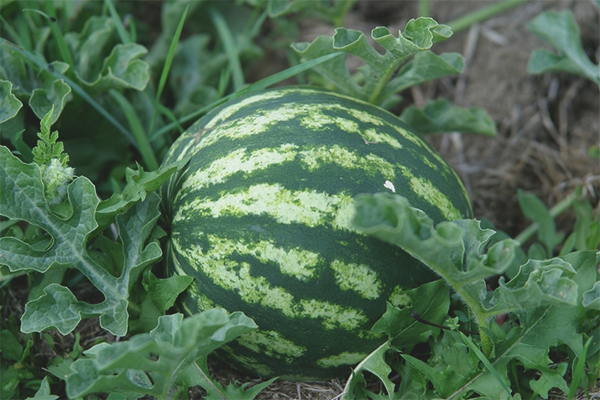
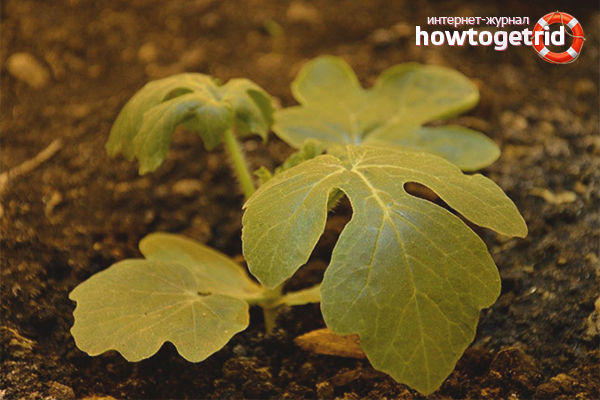
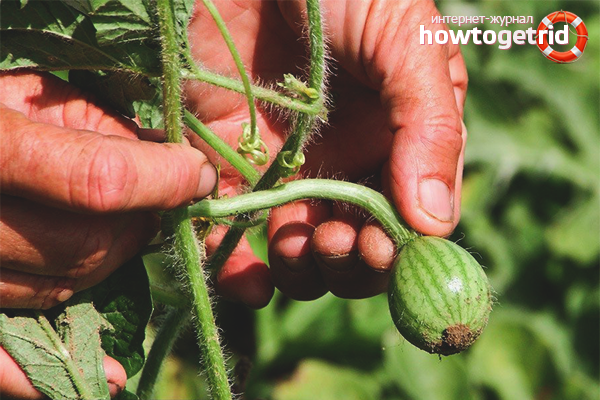

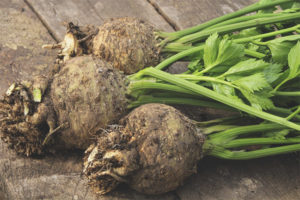
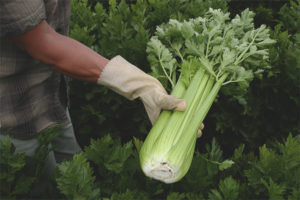

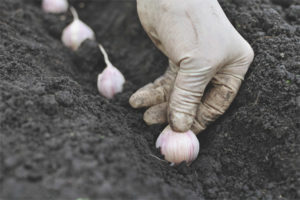
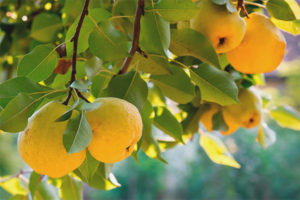
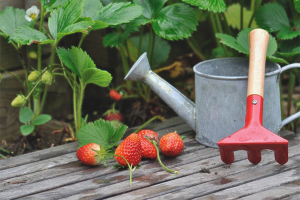

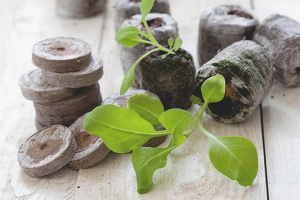
To send